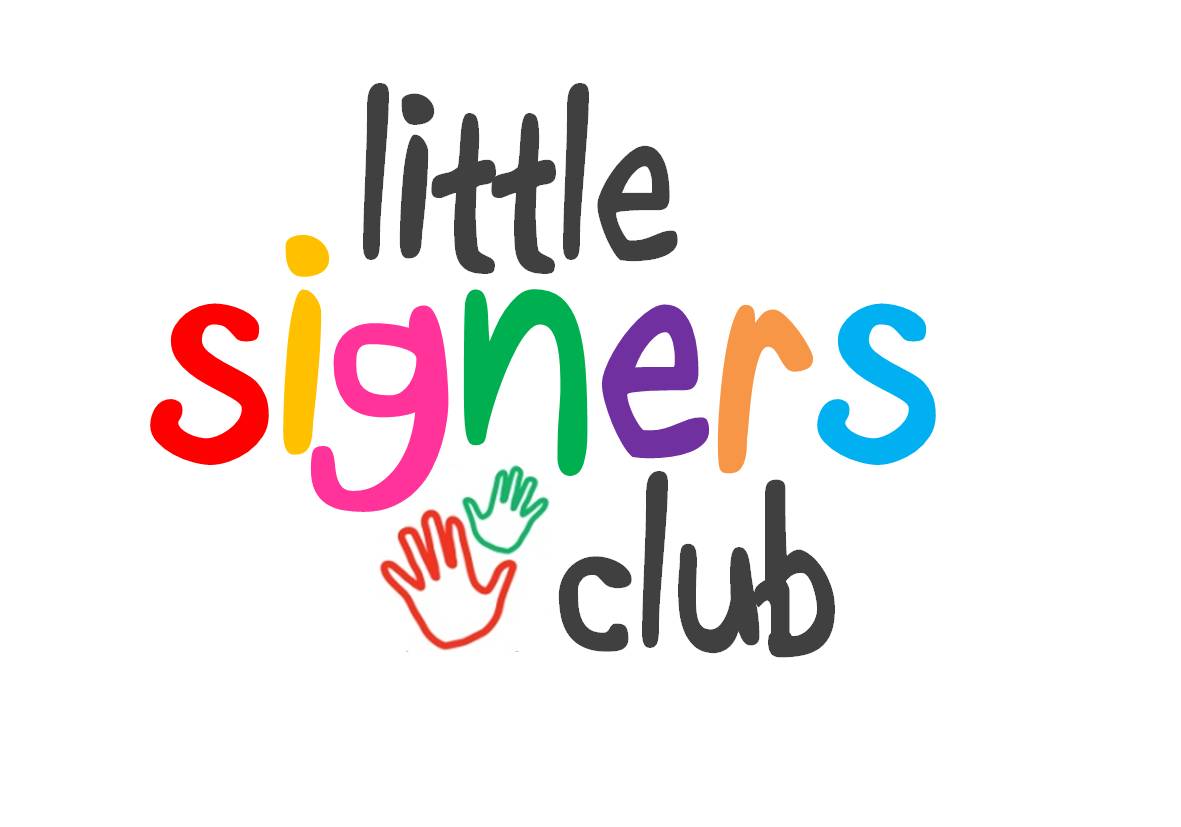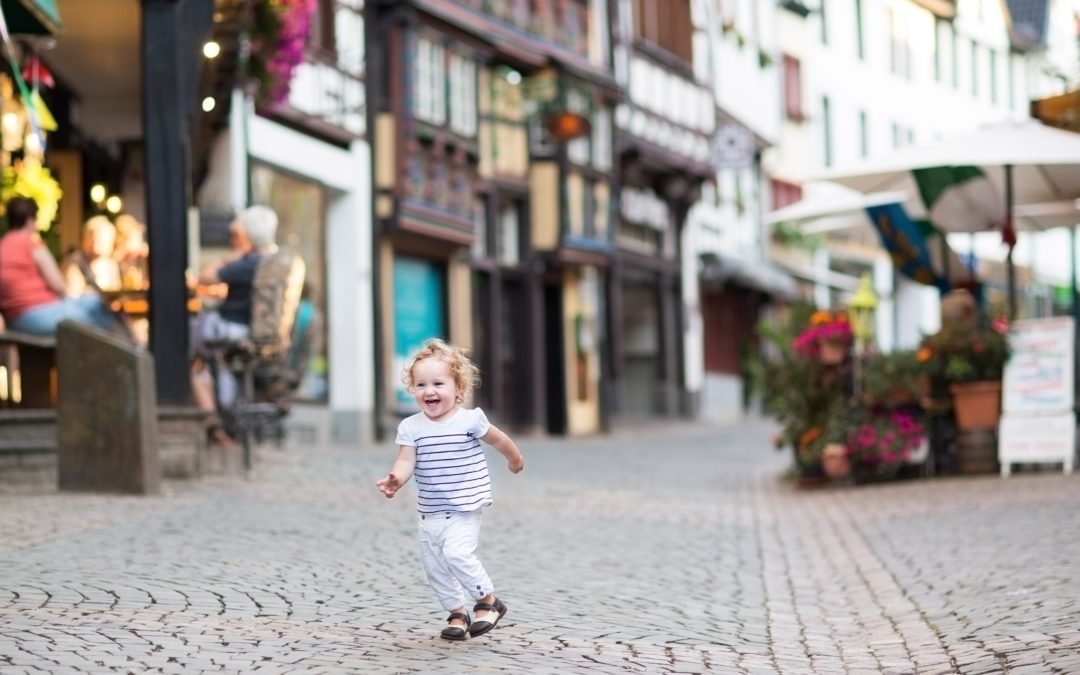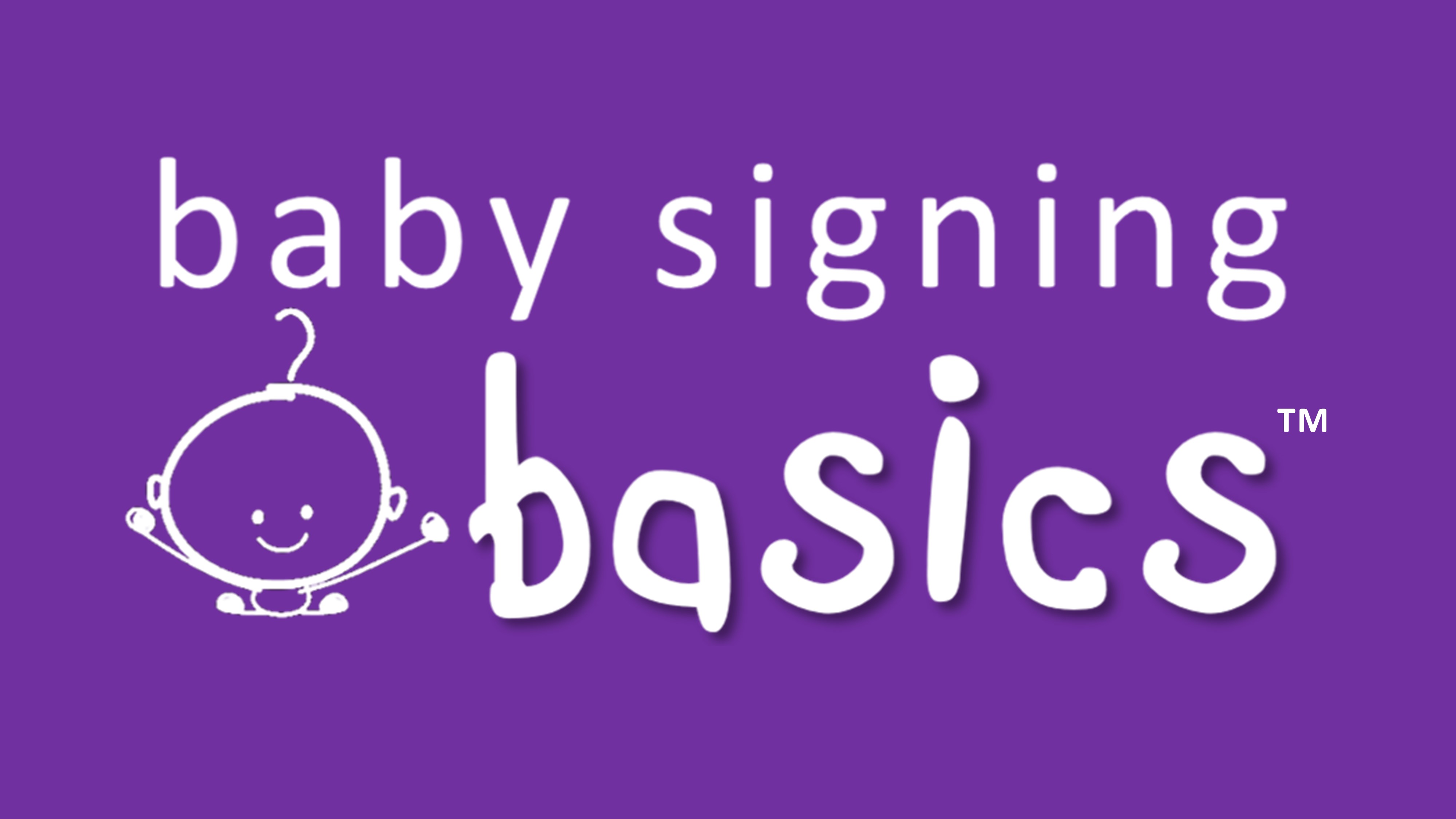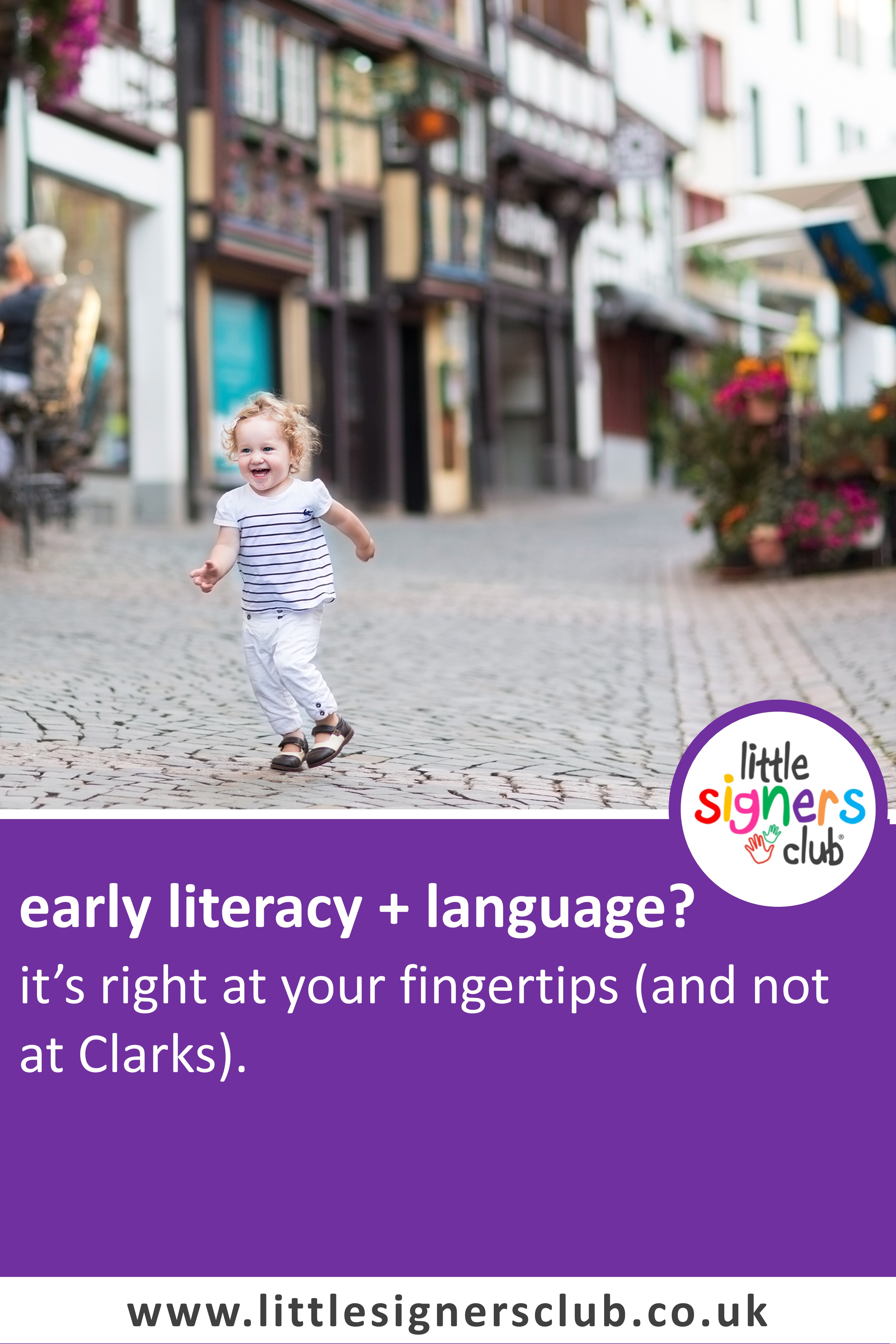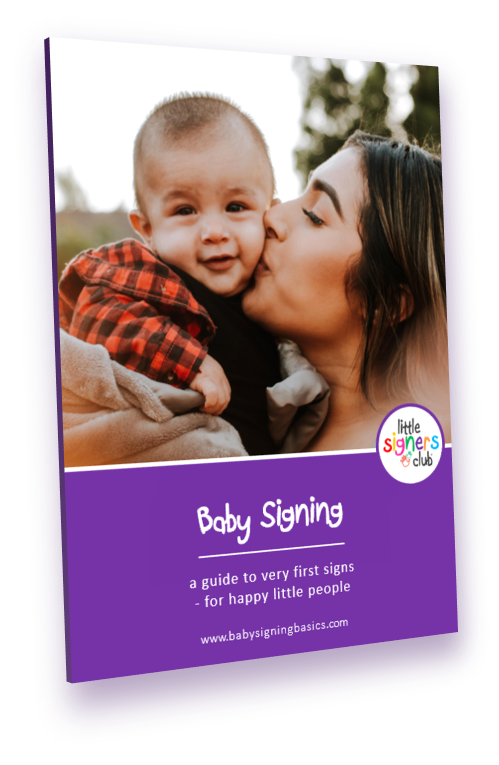Early Literacy and Language? It’s right at your fingertips (not at Clarks)
It’s a busy Saturday. You need new shoes for your little one.
It should have been done a couple of weeks ago but somehow there is never quite the time.
You know, before you get there, that there will be a queue so you prepare with snacks and games and hope to goodness that you won’t be the mama dealing with a rampaging, possibly sticky, cherub let loose in a shoe store. You also know that this might be the best scenario you are going to get away with.
It’s against this background that a new initiative has made its way into the spotlight just this week. Clarks, the popular children’s shoe store, are going to be trained ‘on children’s speech, language and communication development’ in an attempt to ‘tackle “concerning” rates of children’s literacy’.
The idea, in a nutshell, means that staff will be encouraged to create conversations with children when they come into store to have their feet measured and shoes fitted. As any brave mama knows, shoe fitting a toddler is not for the fainthearted and we all want it over and done with as soon as possible.
‘You know, before you get there, that there will be a queue so you prepare with snacks and games and hope to goodness that you won’t be the mama dealing with a rampaging, sticky, cherub let loose in a shoe store..’
To recap:
It’s a busy store with a queue for shoe fitting.
It is quite possibly noisy.
An unfamiliar environment. New smells and sounds. iPad measuring. Shiny shoes.
And strangers.
Strangers who want to strike up conversations with our children (have you ever met a grown-up who thought to introduce themselves to your little one and explain what was happening before they started pulling them about?) which will send them hiding behind you as soon as you can say ‘hummous’ – even though only two seconds ago they had plenty to say.
So what can you do to enhance early language and literacy development (without heading to Clarks?)
It’s all in your fingers.
Using gesture communication, like baby signing, has been shown to increase literacy and language for young children.
In fact, using sign language with little ones is one of the most effective ways to ensure a head start, right across their development, with studies placing signing children 12 IQ points ahead of their peers at age 8.
“Research shows when signing is added to the (preschool) curriculum, children not only find signing fun but also show a significant improvement in receptive English vocabulary and retain information for a longer period of time.”
Marilyn Daniels | Dancing With Words
Described as ‘language in motion’ signing helps little ones learn, retain and recall language more effectively because they are learning kinaesthetically – by moving – which is, after all, what little bodies were built to do (back to rampaging toddlers).
ICAN, the children’s communication charity, state that at 2 years of age a child is likely to have 2 word sentences and know around 50 words.
In contrast, our experience of signing babies and toddlers shows us that frequently they have many more words identified by both sign and language, are able to put together far longer sentences (my most memorable one was a 14 word sentence of my son’s at a little over 2 years of age!) and that these sentences are grammatically and contextually correct too.
Baby signing helps little ones put words together so easily and helps with grammatical concepts that most people would think are way beyond their comprehension – unless they had experienced it for themselves.
Early interventions need to be timely, consistent and start where your little one is..
‘Signing and talking simultaneously with young children, to emphasise key words in context, is an important tool with young children in the early stages of language development’
Michael Jones | Talking and Learning With Young Children
There is no question that Early Interventions for literacy and language can, and do, make the most remarkable impact for those children who may need it. But those interventions need to be timely, consistent and start where your little one is, consolidating skills already gained whilst gently supporting new ones.
As part of our work for the Early Language Development Programme and Hello; The National Year of Communication (2011) these are some of the startling statistics that show just how important it is to encourage early literacy and language skills:
By 22 months – a child’s development can predict outcomes at age 26.
By 2 years – 75% of a child’s brain growth has occurred.
By 2 years – the experiences of the child physically affect the brain structure.
By 4 years – the difference in the number of words different groups / demographics of children hear is 19 million.
By 5 years – a child’s vocabulary will predict educational success and outcomes at age 30.
So if you are worried about developing your child’s literacy and language skills, try baby signing.
It’s huge fun, it’s simple, it makes complete sense and you’ll love learning BSL with your little one, safe in the knowledge that all that eye contact, bonding, songs and stories are giving your child the very best start with their language and literacy skills. In fact, it’s a skill for life.
Or – you can head to Clarks.
Notes:
Little Signers Club is the only UK baby signing company that underpins its training with accredited early communication development training
Little Signers Club maintains a Licensed Tutor status for ICAN, the children’s communication charity.
Little Signers Club was a partner for delivering the ELDP, an intervention developed in response to the Berkow Review in 2008 as well as a partner for Hello: The Year of Communication and invited to the Houses of Parliament to celebrate it’s success.
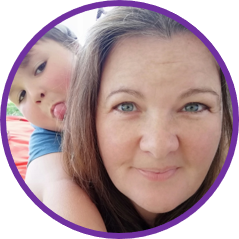
Shelley
Founder | Speaker | Author | Chief Bubble Tester | Mum
Shelley is the founder of Little Signers Club and has been teaching little ones, and their grown ups, how to use sign language for accelerated communication and understanding since 2005.
Kindly regarded as an expert in her field, Shelley regularly contributes to Childcare Expo, has been featured on BBC1, BBC Radio, in Junior Magazine, Gurgle Magazine, and was a contributing author for ToddlerCalm; A Guide to Calmer Toddlers.
She has three children of her own and, when she is not sharing her love of baby signing with the world, can be regularly found toasting marshmallows over a campfire.
